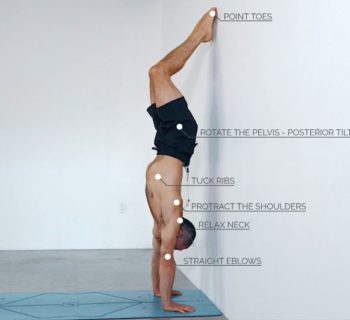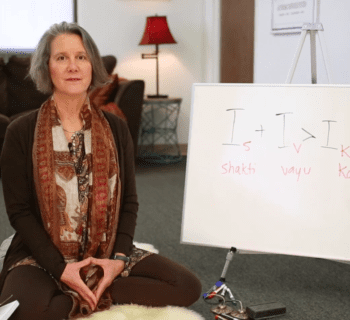Facing an eating disorder is hard. Really hard. That goes for if you are a person who has an eating disorder yourself, or if you have someone in your life with one: a friend, loved one, co-worker, or student. Facing an eating disorder can be confusing, scary, frustrating, and sad. An eating disorder is a beast of an illness.
You may wonder what you can do to help. It is so natural and caring to want to help relieve suffering, your own or someone else’s. But attempts to help and fix an eating problem can often be met with anger, resistance, or withdrawal. Helping is often the wrong place to start when facing an eating disorder. Compassion, instead, needs to come first.
What is compassion? Kristin Neff, a well-known mindfulness teacher, teaches that the word compassion literally means “to suffer with.” To have compassion, we start by making a lot of room to be present with the lived experience of someone who is suffering. This takes time, true listening, and open-mindedness. And then, with this deep presence, we offer kindness, understanding, and patience. Compassion can be profoundly healing—truly, the most important ingredient in relieving suffering.
How can we develop compassion for the people in our lives with eating disorders? Real compassion takes real work to develop. Start with yourself, acknowledging how hard this might be, and move forward without expecting it to be easy, perfect, or permanent. Just like yoga offers different practices to move towards liberation—study, meditation, asana, pranayama—so we can draw tools from yoga to help you cultivate compassion (karuna in Sanskrit):
Self-study: mindfulness of your own stories
Before you listen, take time to acknowledge and understand stories or judgments you may carry about people with eating disorders. We all have stories and stereotypes about who gets eating disorders and why—whether from life experiences, media, or a class in school. Some common stories are that eating disorders only happen to thin, white, young, wealthy girls. Or that they are about control, vanity, or attention. That they are caused by bad parenting, societal messages, or incorrect nutritional information. That if a sufferer could just love their body, they would get better. That having an eating disorder is a choice. That because you learned to love your body or because you fully recovered from an eating disorder, you know everyone else can recover like you did. Some of these stories are true for some people with eating disorders. They are not true for every person—we are truly all so different as human beings.
Ask yourself—how do your stories affect how you respond to a person with an eating disorder? How do they affect your listening, your expectations, and your patience?
Beginner’s mind: cultivate curiosity
Take time to learn about the complexity of eating disorders, and the diverse ways they present. Start by educating yourself without putting the burden of teaching you on your loved one. Read stories about people who have eating disorders that don’t fit the conventional narrative. Read about people of color, transgender people, men, fat people, older people. Learn about genetic research, which can help you let go of blame. Learn about how how malnutrition affects behavior, about the link between restrictive eating and binge eating, about how systematic oppression affects both illness and recovery, about health at every size. Hold each new fact or idea with tentative, flexible understanding.
Then be open to learning directly from the person in your life with an eating disorder. Ask with gentle, non-demanding curiosity if the person would like to share, and let them know it’s okay if they don’t. If they do share with you, express gratitude. Let go of your own shame or blame, as these emotions make it very difficult to learn.
Seeking truth: awareness of suffering
People with eating disorders can experience a great deal of emotional suffering, even well into the recovery process. They usually experience intense physical suffering as well—digestive difficulties, headaches, fatigue. Unfortunately, neither of these types of suffering are visible to onlookers. It is a great myth that you can tell who has an eating disorder or “how sick” someone with an eating disorder is by looking at them. People can have anorexia nervosa, bulimia nervosa, binge eating disorder, or other food struggles and look any kind of way—thin, fat, and everything in between. Yet people with eating disorders almost always believe that they are not sick enough—not sick enough to really have an eating disorder, not sick enough to deserve care, not sick enough to heal.
Unfortunately, our culture reinforces this idea of “not sick enough” with a medical system that only offers care to sick patients that show up in certain bodies, and with media that highlights only super skinny people. This is a double suffering—to suffer and then to have that suffering invalidated, ignored, and invisible.
You can practice compassion by reminding yourself that eating disorders are also illnesses of the mind and heart, even when someone appears physically well. Stay curious about the person’s emotional state, instead of focusing on their physical behaviors or appearance. Welcome expressions of suffering by calmly asking questions to elicit more, or saying, “thanks for sharing with me.” Avoid criticizing emotions as irrational or turning away from suffering by offering positive thoughts or minimizing discomfort with comments like, “focus on the good things in your life” or “this too shall pass.”
Practice equanimity: acknowledge and tend to your own emotions
How do you feel when you approach someone who has an eating disorder? Do you feel anxious? Scared? Annoyed? Angry? Triggered? Ashamed? Where do you feel those emotions in your body? What thoughts or memories come up?
Do not make it the responsibility of the suffering person to make your discomfort go away. Tend to your own body, mind, and heart. Get support for yourself. Care for yourself is crucial to have the endurance to be present for the long and winding path of the healing process.
Lovingkindness: offer patience and hope
We each express and experience kindness in our own unique way. Act from your heart. Know that being kind doesn’t mean that you can’t set limits or boundaries with your loved one—it just means that you set those boundaries with love and understanding of the emotions they bring up. Keep the light of hope for the other person’s healing alive within you.
There are many ways to offer help—lots to do for someone with an eating disorder. But start with compassion, and you will not only have offered a gift to the person who is suffering. You will also have opened up your own heart and your own capacity for healing, presence, and love.
NOTE: This post is part of a collaborative media series organized and curated by Omstars and the Yoga & Body Image Coalition intended as a deep dive into yoga & body image
By Suzannah Neufeld, MFT, C-IAYT

Suzannah Neufeld, MFT, CEDS-S, C-IAYT, is a licensed psychotherapist, certified eating disorder specialist, and certified yoga therapist. Suzannah’s dedication to compassion for people with eating disorders comes from her work supporting individuals and families in their healing since 2003, as well as from her own lived experience with an eating disorder–she has seen again and again the profound power of compassionate relationships in the recovery process. She is a co-founder of Rockridge Wellness Center, a counseling and health collective in Oakland, CA, where she has a private practice. Suzannah is the author of the book Awake at 3 a.m.: Yoga Therapy for Anxiety and Depression in Pregnancy and Early Motherhood (Parallax Press, 2018). She is also a contributing author in the anthology Yoga Rising: 30 Empowering Stories from Yoga Renegades for Every Body. Learn more at www.suzannahneufeld.com.










